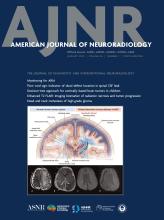I have read with great interest and care the article titled, “Comparative Evaluation of Lower Gadolinium Doses for MR Imaging of Meningiomas: How Low Can We Go?”1 published in the American Journal of Neuroradiology. This study is both timely and crucial, addressing the notable issue of reducing gadolinium doses in the imaging follow-up of meningiomas.
Despite their prevalence, there is considerable heterogeneity in the protocols used for meningioma imaging. This lack of standardization extends to radiologic follow-up guidelines, leading to varying practices among institutions and clinicians. As highlighted in previous literature, no consensus exists on the optimal imaging strategies, which further complicates patient management and treatment outcomes.2
The package insert for Gadovist (Gadovist, Bayer AG, Berlin, Germany, 2023) clearly states, “This product is intended for single use only.” This precaution is necessary to prevent contamination and ensure patient safety, because reusing contrast agents can introduce the risk of infection and compromise the sterility of the product. For example, using a vial of 7.5 mL for a patient weighing 70 kg at a dose of 0.04 mmol/kg means administering 2.8 mL, leaving a significant amount of unused contrast agent. Although reducing the dose is better than overdosing, the issue of safely disposing of the remaining gadolinium to prevent environmental contamination remains critical. Proper disposal protocols and advanced purification systems in wastewater treatment plants are necessary to address this concern, but further research and development in this area are urgently needed.3
Moreover, the potential of artificial intelligence (AI) in imaging offers a promising alternative to traditional methods. AI-driven segmentation could significantly enhance the precision and reliability of follow-up imaging for meningiomas, even in the absence of contrast agents. Some studies suggest that AI algorithms can effectively differentiate tumor tissue from normal brain structures, potentially reducing the reliance on gadolinium-based contrast agents.4 This approach could be particularly beneficial for monitoring small, recurrent meningiomas, providing a noninvasive option.
By using AI technology, radiologists could achieve more accurate and consistent assessments, especially important for small or recurrent tumors that may be challenging to detect with conventional methods. Additionally, AI could facilitate more standardized imaging protocols, leading to improved patient outcomes and more efficient use of medical resources.
Footnotes
Disclosure forms provided by the authors are available with the full text and PDF of this article at www.ajnr.org.
References
- © 2025 by American Journal of Neuroradiology












